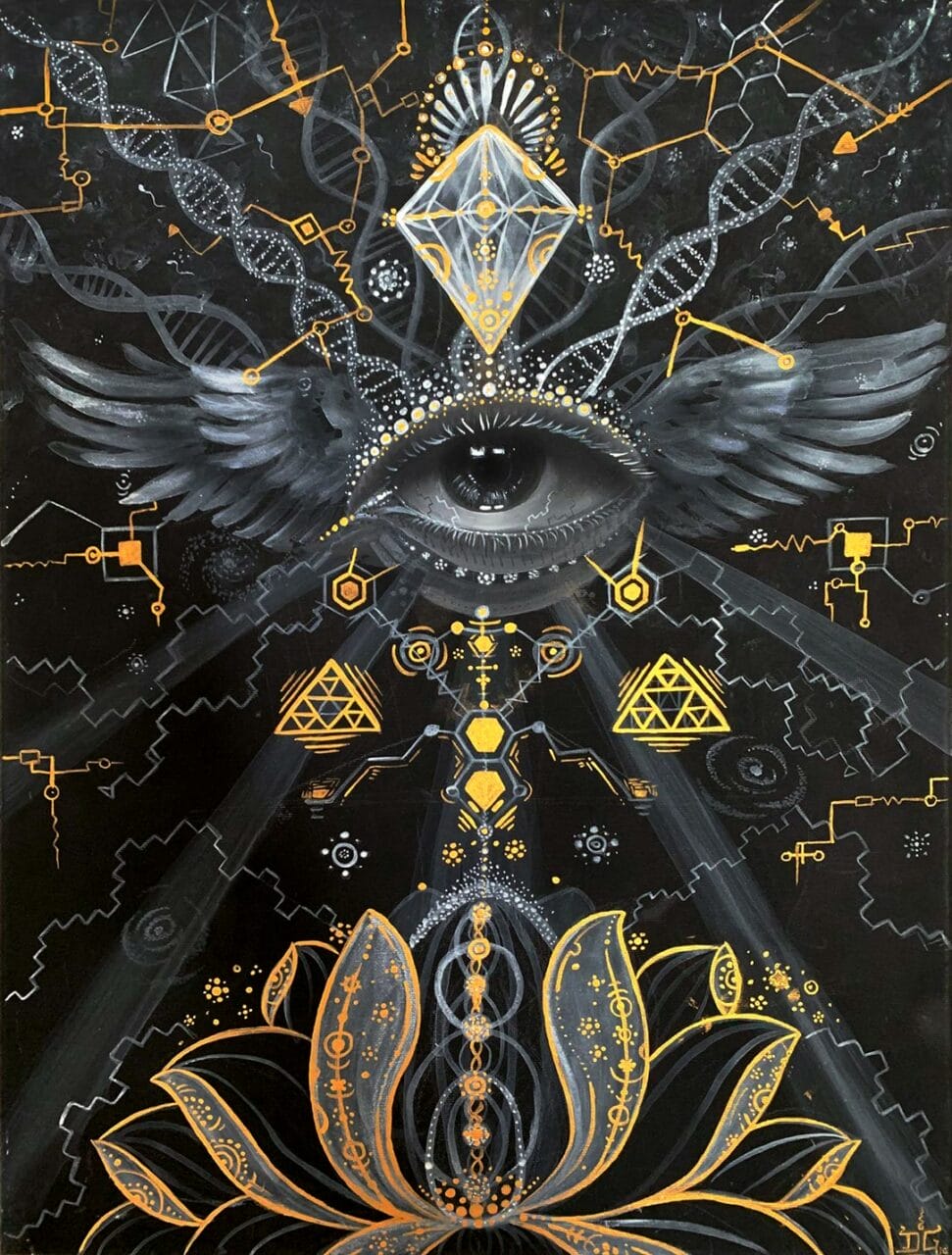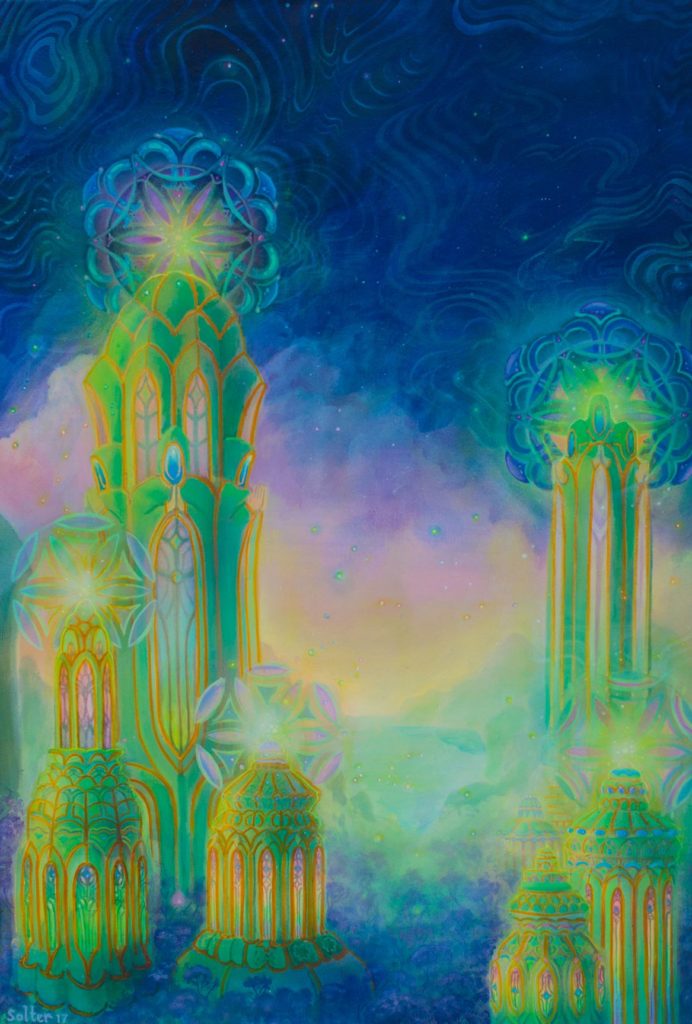
© Uni Kaya
A Historical Overview of Shrooms
The origins of Shrooms can be traced back to 9000 BC, according to historical documents. These distinctive mushrooms, boasting over 200 unique species, contain psilocybin, a compound known for its hallucinogenic properties. Its effects may include altered perception, visual and auditory hallucinations, and deeply spiritual experiences. These mushrooms have been used for thousands of years in various spiritual ceremonies, rituals, and practices by diverse cultures and tribes. Many of these historical uses originate from North and South America.
Shrooms in Ancient Times
Throughout history, many cultures have made use of natural psychedelics. Evidence found in the Sahara Desert suggests that humans were using Psilocybe Cubensis more than 7000 years ago. Archaeological findings reveal the presence of this hallucinogenic substance in prehistoric art across various regions. For instance, indigenous tribes of North Africa in the Sahara have depicted its use in their paintings from around 9000 BC. Similarly, the renowned Selva Pascuala mural rock painting in Spain, which is about 6000 years old, suggests the use of Psilocybe Hispanica in religious rites. The influence of these substances on our cultural evolution, religious beliefs, art, societal norms, and everyday life is increasingly apparent. This substance has undoubtedly left a deep impact on our culture and society.
A Brief History of Shrooms Usage
Throughout history,magic Shrooms have had a long-standing usage. The psychoactive substance that we know today has been around for several centuries, with various customs regarding its use. It’s time for Get Magic Mushrooms Canada to delve into the historical journey that brought Shrooms to its current status.
Key Highlights
- Dried Shrooms have been employed in traditional rituals and spiritual healing for centuries. Today, they are used as a treatment for mental health conditions.
- Shrooms became a symbol of the hippie culture and played a significant role in the psychedelic revolution, encouraging its recreational use.
- Key figures like Wasson, Sabina, and McKenna were instrumental in introducing psilocybin to the contemporary world.

© Jonathan Solter
Endorsing the Stoned Ape Theory
The Stoned Ape Hypothesis was presented by Terence McKenna. He posited that psilocybin could have played a pivotal role in shaping human evolution, especially cognitive development. While the theory has its critics, its intriguing premise cannot be disregarded.
Ancient Cultures and Sacred Practices
Historical civilizations designated cubes through various forms of representation like symbols, art, and statues, denoting the ritualistic use of Shrooms. The Mayans and Aztecs used it as a medium to interact with otherworldly beings, including gods. In the culturally diverse Aztec society, it was referred to as “teonanácatl“, which means “flesh of the gods”. The concept of a psychedelic experience was alien, causing them to view it as a divine entity. Heading north to Siberia, hallucinogenic Shrooms were employed by Siberian shamans. They made use of the hallucinogenic substance (Shrooms) known as “Amanita Muscaria” for spiritual healing and traditional practices, despite its toxic nature. This dates back to nearly ten thousand years ago. In African tribal rituals, particularly among the Congo and Zimbabwean tribes, cubes were utilized to communicate with ancestors, trigger visions, and facilitate spiritual healing. These historical cultures add to the understanding of current psilocybin use. The reverence for this substance in these cultures stemmed from its divine connection and its ability to incite mystical experiences.
Shrooms in Mythology and Folklore
Many stories, including those by Gordon Wasson, have highlighted the connection between Shrooms and the mystical world, underscoring its role in folklore and mythology as a medium for divine communication and enlightenment. In ancient India, the Soma—a ceremonial drink mentioned in the Vedas—was believed to trigger altered states of consciousness. Scholars like Wasson theorize that it could have been brewed from psychoactive plants, specifically fly agaric. Some even suggest that this ancient concoction might have included a mix of different plants. Regardless of its origins, the psychedelic history suggests that Soma facilitated the appearance of sacred symbols during rituals, symbolizing a portal to higher wisdom or spiritual enlightenment.
The Contemporary Age
A Brief Overview of the
Origins
400;”>Historical documents from the era before Columbus arrived in America indicate that the Mayans and Aztecs utilized psilocybin Shrooms. However, in the 15th and 16th centuries, the Spanish rulers deemed its use as uncivilized and consequently outlawed it. Despite the ban, shamans secretly continued to consume magic Shrooms, thereby keeping their cultural practices alive for over 400 years.
Re-emergence in the Western World
The 1950s saw the revival of these substances in Western societies, thanks to the groundbreaking work of individuals like R. Gordon Wasson, Roger Heim, and Albert Hofmann. During a visit to Mexico, they managed to isolate the two psychedelic components (psilocybin and psilocin) present in the Shrooms bought from the Mazatec tribe. Wasson subsequently shared his findings, experiences, and understandings about magic Shrooms in Life magazine. His articles and personal narratives led to the substance being recognized as a potent hallucinogen. By the 1960s, the substance had turned into a symbol of the Hippie movement and was seen as a conduit to spiritual experiences. However, its usage also triggered considerable debate and sparked a surge in the recreational use of hallucinogenic substances.
Subsequent Phase: Worldwide Prohibition
In 1971, psilocybin was classified as a Schedule 1 illegal drug by the United Nations Convention on Psychotropic Substances, along with Lysergic Acid Diethylamide and N, N-Dimethyltryptamine. All these substances were believed to have no medicinal value and a high likelihood of misuse. This led to widespread outlawing in Western countries, including Canada and the U.S., severely limiting the spiritual and therapeutic uses of the substance.
The Modern Re-emergence of Psilocybin
In recent years, there has been a loosening of the strict laws surrounding the use of psilocybin, beginning with its decriminalization. This shift complies with the UN’s provision for treaty member nations to regulate the substance as per their own judgment. At the same time, a growing body of research and clinical trials on psychedelics and consciousness strongly endorse the potential medicinal uses of psilocybin. A 2021 study examining the therapeutic use of psychedelics implies that the 1970 ban greatly hindered further research. However, an initial study in 2004 revived interest in psilocybin, suggesting possible uses in neuropsychiatry, specifically for addressing mental health disorders such as:
- Depression, Anxiety, and Stress
- Post-traumatic Stress Disorder (PTSD)
- Obsessive-compulsive Disorder (OCD)
- Drug Abuse (Aiding in Addiction Recovery)
- Excessive Consumption of Alcohol and Drugs)
Media and Art’s Influence
The topic of psychedelic cubes has permeated diverse mediums due to its increasing popularity. The renewal of interest in these substances is largely attributed to their representation in various forms of media, art, and literature. Movies such as “Fantastic Fungi” by Director Louie Schwartzberg, and documentaries exploring their therapeutic properties, have enriched public understanding of their psychological and physical impacts. Michael Pollan, the author of “How to Change Your Mind,” delved into the usage of psychedelics for mental wellness and spiritual development, thereby reviving their societal and therapeutic relevance.
Prominent Historical Advocates of Fungi
- María Sabina: A Mazatec shaman and poet from Mexico, Sabina played a significant role in popularizing cubes in the Western world. She permitted Wasson to participate in her Shrooms ceremonies.
- Gordon Wasson: Wasson, a writer, gained recognition for bringing the drug to global awareness. His comprehensive portrayal of his experiences with Sabina contributed to a broader comprehension of its regional usage.
- Terence McKenna: A leading proponent of psychedelics, McKenna was instrumental in emphasizing their cultural and philosophical significances. Through his speeches, publications, and research, McKenna popularized the “Stoned Ape” theory, suggesting it as a cognitive enhancement tool that influenced societal evolution.
The Timeline – An Overview
with TRD.
| Prehistoric | Evidence of prehistoric usage is depicted in stone art discovered in the Sahara, Africa |
| Ancient | The Maya and Aztec societies utilized teonanácatl in their religious and spiritual rituals. |
| 16th Century | Its usage declined due to its association with Indigenous belief systems |
| 18th Century | The drug’s “intoxicating” effects became evident in 1799 when four children accidentally consumed Psilocybe Semilanceata, highlighting the potential risks of its usage. |
| 20th Century | The drug was brought to the Western world by Wasson and Sabina, sparking a psychedelic revolution among the hippie subculture. The UN legalized its possession and consumption. |
| 21st Century | Studies are being conducted to verify its medicinal potential |
increasing. Its usage has been authorized by Health Canada through their Special Access Program.
The Emergence and Evolution of the Psychedelic Era | Purchase Shrooms Online at Get Magic Mushrooms Canada
Get Magic Mushrooms Canada’s consistent promotion of cubes, backed by robust scientific research, will keep advancing until it achieves worldwide recognition. Get Magic Mushrooms Canada’s online Shrooms store is geared up to facilitate this transition. Our wide range of products appeals to customers, inspiring them to embark on the enigmatic and therapeutic journey of psilocybin. Secure your preferred items from Zoomies today.
Commonly Asked Questions
No, Amanita Muscaria does not contain the active ingredients that are present in Psilocybe Cubensis. Rather, the psychoactive compounds in fly agaric are muscimol and ibotenic acid. One prevalent theory about Soma’s origin proposes it as a combination of various psychoactive plants. In a similar vein, ayahuasca is a drink that alters consciousness. However, the only commonality between the two is the perception of soma as an analogue of ayahuasca. It was probed for potential Shrooms poisoning after it was classified as a toxic Shrooms. Today, it is recognized as the Psilocybe Mexicana.

